
Willem Klas Heada worked in Haarlem. His career as a painter, he began with paintings on religious subjects and portraits. Later, the artist began to paint only still lifes. They were highly valued by contemporaries, the master was popular, had many students and followers. The first known still-life of the artist was performed in the genre of Vapnaz, where the objects had a special symbolic meaning. However, the main things in the creativity of Heda were the so-called “breakfasts” – still lifes with dishes covered with household utensils, with a neutral background, soft lighting, restrained colors and subtle gradations of light.
Heda also liked to write silver bowls with flickering highlights, goblets made of Venetian glass, mother-of-pearl shells. The artist almost always used the same motives in his works, but changing the composition, he created original compositions representing a new look at the usual objects. His still lifes are characterized by amazing accuracy in the transfer of objects and at the same time mysterious poetry, creating a romantic sense of mystery. Other famous works: “Breakfast with a lobster.” 1648. The Hermitage, St. Petersburg; “Breakfast”. 1652. The Hermitage, St. Petersburg; “Breakfast with blackberry pie”. 1631. Picture gallery, Dresden; “Ham and silver dishes.” 1649. The Pushkin Museum. A. S. Pushkin, Moscow.
 Still life with a tin mug by Willem Klas Kheda
Still life with a tin mug by Willem Klas Kheda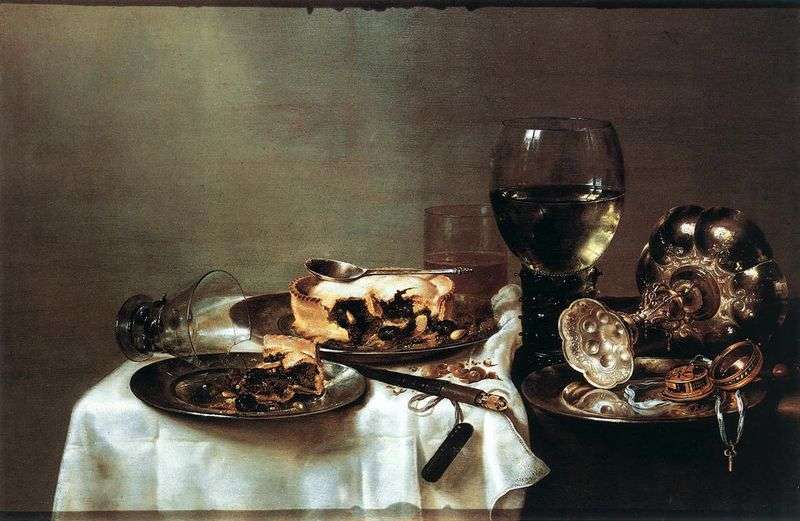 Breakfast with blueberry pie by Willem Klas Heda
Breakfast with blueberry pie by Willem Klas Heda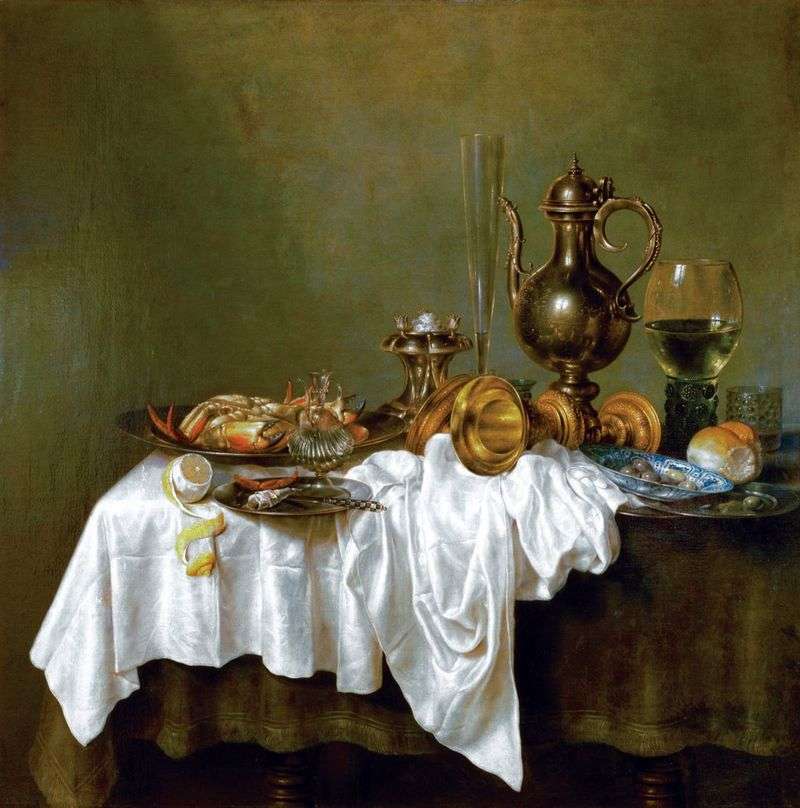 Breakfast with crab by Bill-Klas Kheda
Breakfast with crab by Bill-Klas Kheda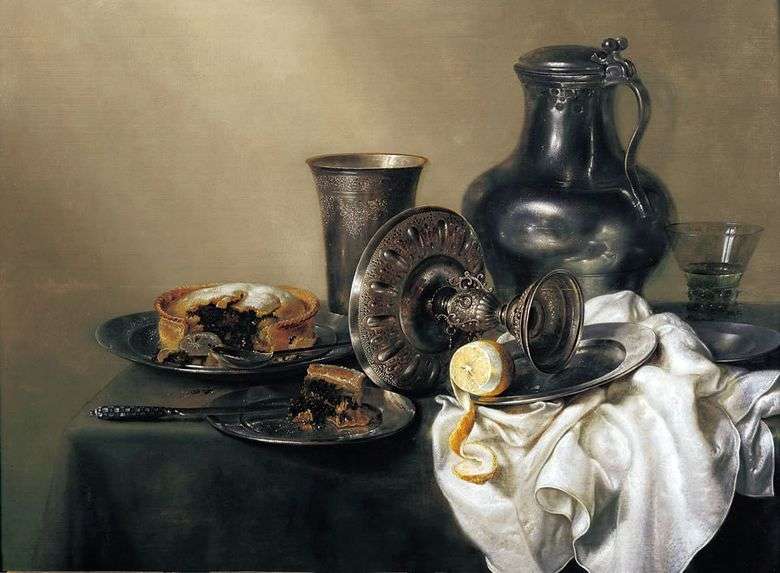 Bodegón con una copa de oro – Willem Klas Kheda
Bodegón con una copa de oro – Willem Klas Kheda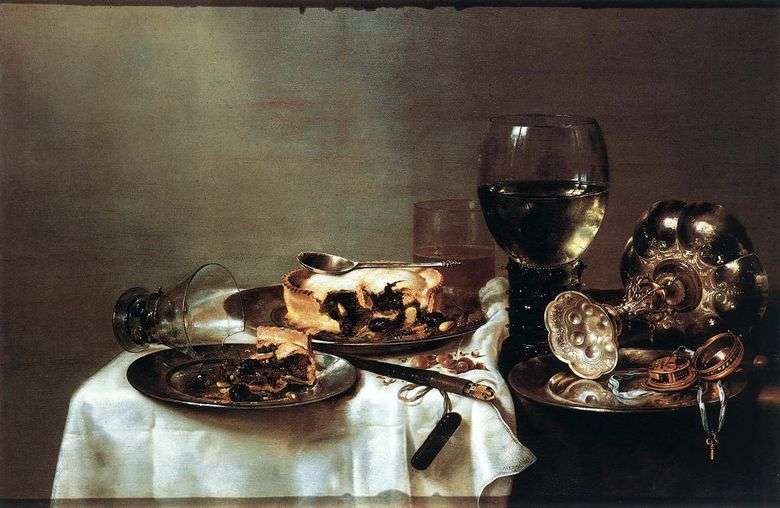 Desayuno con pastel de arándanos – Willem Klas Kheda
Desayuno con pastel de arándanos – Willem Klas Kheda Still life with a cup of pearl shell by Willem Calf
Still life with a cup of pearl shell by Willem Calf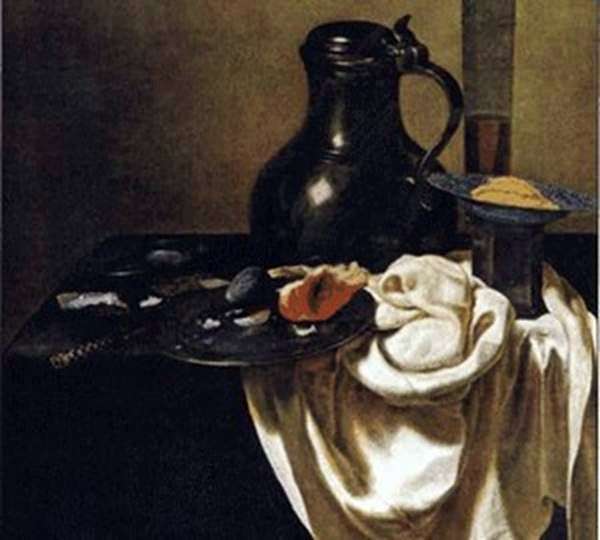 Naturaleza muerta con una taza de hojalata – Willem Klas Kheda
Naturaleza muerta con una taza de hojalata – Willem Klas Kheda Still life with a drinking horn by lobster and glasses – Willem Kalf
Still life with a drinking horn by lobster and glasses – Willem Kalf